by David M. Roth
"It would be the worst kind of masquerade to prolong a situation now when, you know as well as I do, it has become irreparable by the standards of the very love I have for you and you have for me, a love which is now forcing me to be so frank with you, as final proof of what happened between us and will always be unique. I would have liked things to have turned out differently. Take care of yourself."
— excerpt from X's letter to the artist
Woe to the lover who crosses Sophie Calle. In 2004, or thereabouts, Calle, France’s best-known conceptual artist, received a break-up letter via email. What followed was an epic and very public act of revenge: a text/photo/video installation called Take Care of Yourself (2004-07), named for letter’s sign-off line. The author is identified only as X. Whether her ex-lover marked it that way or whether Calle did so to protect his identity is unknown. Either way, it’s an apt indicator of the evisceration he receives at the hands of Calle and her collaborators.
For the piece, which debuted in the French Pavilion at the 2007 Venice Biennale, she asked 107 women to respond to the letter. Their collective reaction, laid out in text panels, a cartoon,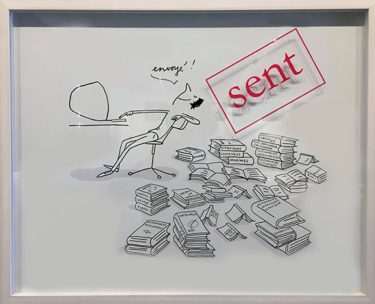
Organized by San Francisco-based Ars Citizen, the exhibition sails past key two highlights of a 40-year career in which the artist famously invaded (and made public) the lives of strangers: Suite Venitienne (1979) and Address Book (1983). Nevertheless, the exhibition is billed as “a comprehensive approach.” A more accurate description would be “selections from the past decade,” since the earliest of the four works on view dates to 2007. Still, you needn’t probe the nooks and crannies of Calle’s oeuvre to get the gist of it; a little goes a long way toward illuminating the unique textual and visual approach she takes to examining love, death, memory and loss. Missing serves up powerful doses of each, intermingled in ways that demonstrate the artist’s willingness to her place own life (and the lives of others) under a public microscope and present them in ways that engage the mind and the senses – a rarity in conceptual art where text-stuffed vitrines coupled with photo documentation of distant events are all too often the norm.
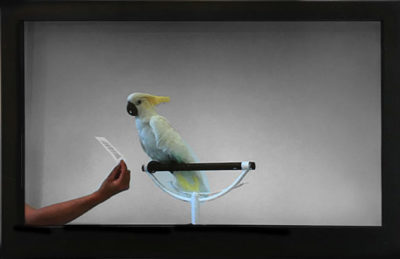
A criminal psychologist writes: “He is an authentic manipulator, perverse, psychologically dangerous and/or a great writer.” A psychic, after consulting the tarot, concludes: “What is hidden in this letter is worse than what it says. It is the letter of a man who is desperate and threatened….” A judge, citing sections of the penal code, opines: “The letter you received offers a reasonable chance at seeing X condemned by the court both for fraud and for deceit…” Another legal-minded writer frames X’s missive as “the negotiation and performance of a banal lease.” A commentator whose profession I failed to note appraises X’s wish “for things to have turned out differently” as follows: “Yes of course: Blame it on Mom, the Priest, the President,
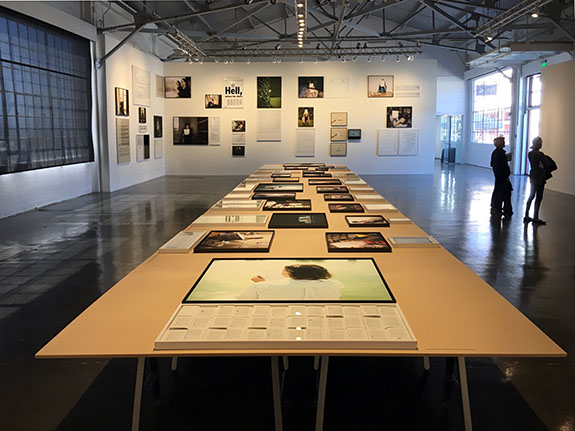
Madonna, his reading of Don Juan, the riots in the suburbs and who knows what else.” About X’s mangled syntax, a Latinist says: “The gentleman has got himself rather tied up in the play of negations.” They are, she determines with palpable exasperation, “absurd and impossible to render.” A police captain chalks up X’s behavior to demographic advantage: Paris has more men than women, so the men do as they please.
This multi-pronged deconstruction would be stupefying were it presented solely as text. Calle sidesteps that pitfall. She frames each text differently and pairs it with an environmental portrait of the author, interspersing forensic touches, like diagrams that chart repeated phrases and the number of words in each sentence of X’s email missive. Additionally, the artist activates the interior of the room (Gallery 308) by running a long table up the middle. She fills it with nearly as many texts as photos, including one of an origami piece, made by a graphic designer in the shape of a striking cobra, indicating the direction the inquiry is headed. Enlivening the exhibit further, the artist populates a long wall with a grid of 33 videos in which an international cast of well-known performers (including Laurie Anderson, Miranda Richardson, Feist and the late
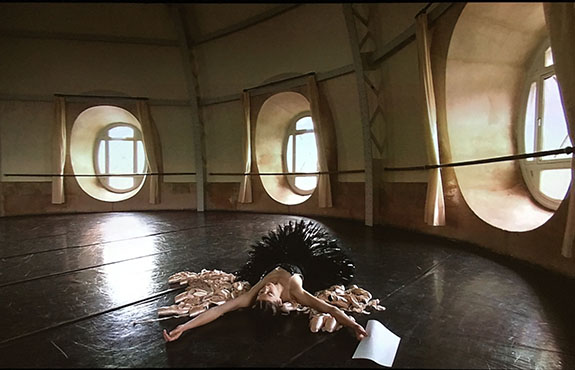
Jeanne Moreau) apear, offering dramatic responses. Each of the videos is programmed to behave like a website thumbnail, running silently on a small monitor before rotating onto a big screen at the center, at which point their soundtracks become audible. Some of those same performers reappear in a montage of still shots packed floor-to-ceiling along a narrow corridor near the front of the exhibit. They depict, in varying degrees, anger, despair and incomprhension. And, in a room at the end of that same hallway you'll find seven more “reaction” videos, the most memorable being one of a ballerina, who, after reading the letter, pirouettes backward at high speed and collapses onto a pile of leggings and shoes — all in the space of a few seconds.
The portrait of X that emerges from this avalanche of professional opinion (and performance) is that of a hopeless miscreant, a man whose inclinations fall somewhere between Casanova and Rasputin. Needless to say, this isn’t journalism. Nor should it be. But a feint in that direction would have helped. Once the thrill of all the analytical gymnatics wore off, I was dogged by a question: What was Calle’s role in the X fiasco? About this we learn little. Speaking to an off-camera therapist, the artist wonders aloud whether an agreed-upon inequity – one that allowed 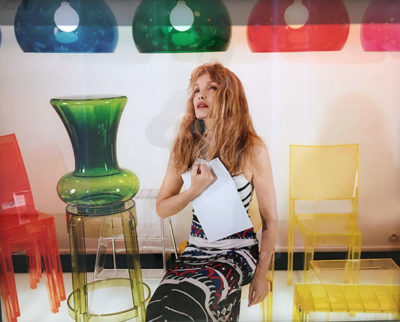
And so, what began as an exhilarating act of female solidarity powered by deep reading ends up exposing a problem much larger than the foibles of X. It’s the unholy harmony that arises when too many sound-alike voices form a “choir.” Nevertheless, Take Care of Yourself stands as a masterpiece, a high point in Calle's illustrious career.
The other major work in the exhibition is Rachel Monique (2007), an elaborate and at turns moving tribute to the artist’s mother, Monique Sindler, a film editor who died in 2006. It’s staged in Fort Mason’s chapel, and it features, as its centerpiece, a video of her last 11 minutes of life. 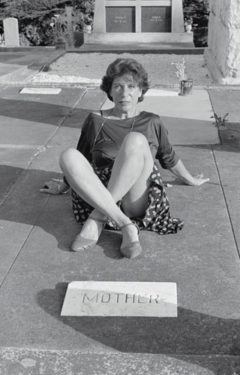
Two other pieces, The Last Image (2010) and Voir la mer (2011), are installed in the Firehouse. The first documents the last recollected images of people blinded by accidents or disease. 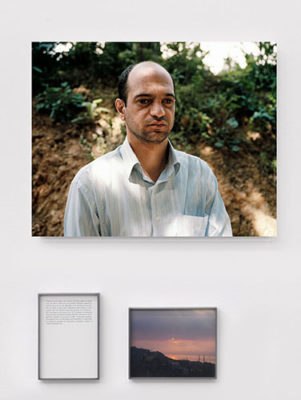
Oddly, these shortcomings do little to detract from the overall experience of Missing. Each piece functions as part of the ensemble, and together they leave you thinking about things that matter: life, death and everything that comes in between. Calle’s work arises from deep personal need, and that is always the source of the most powerful art.
# # #
Sophie Calle: “Missing” @ Fort Mason Center for Arts and Culture through August 20, 2017. Note: Admission is free. However, entry to “Take Care of Yourself” requires advance tickets, available online.
A companion exhibition, “Sophie Calle: My mother, my cat, my father, in that order,” runs @ Fraenkel Lab through August 26, 2017.
About the author:
David M. Roth is the editor and publisher of Squarecylinder.